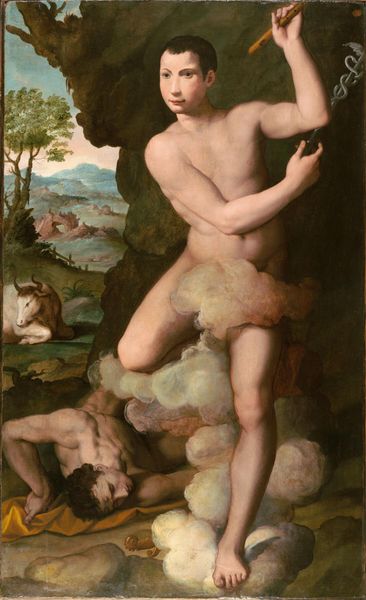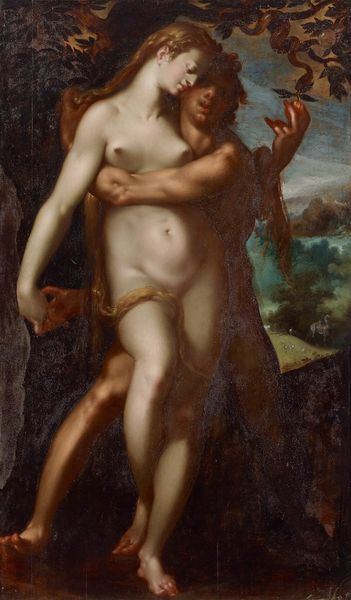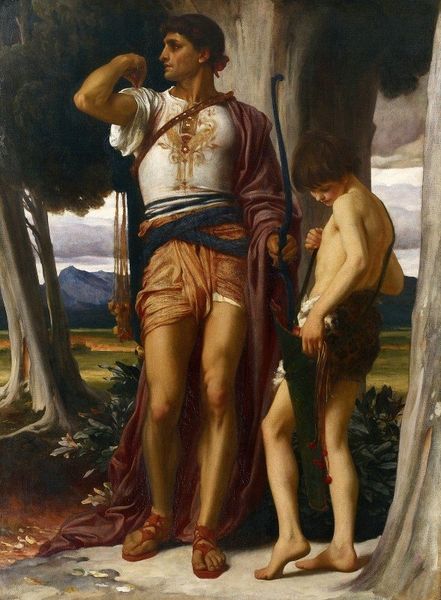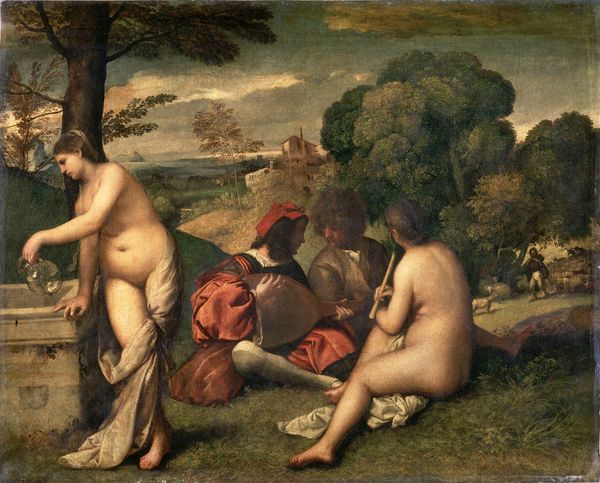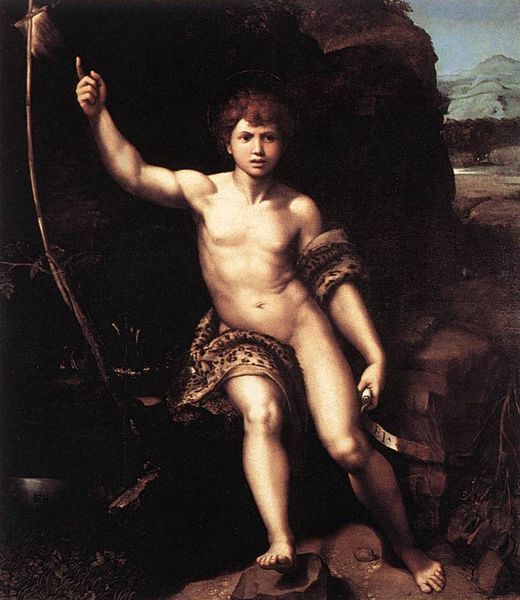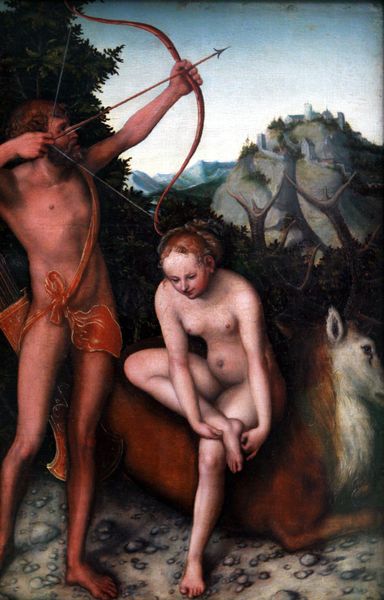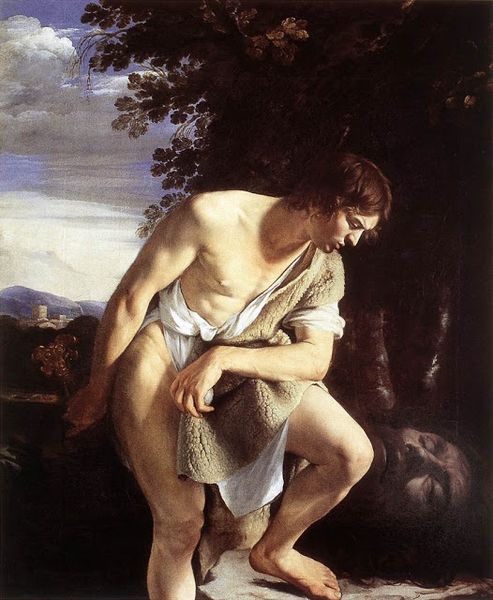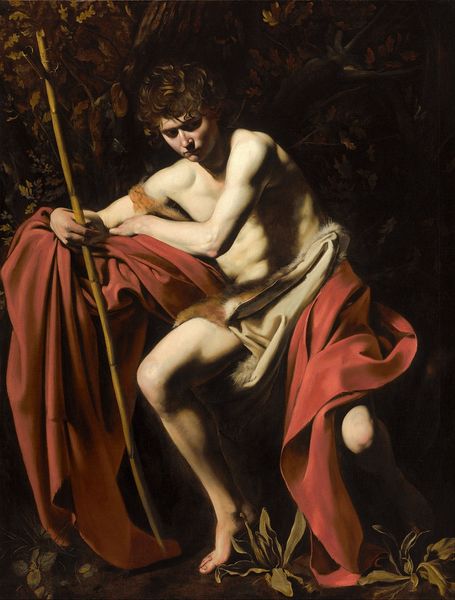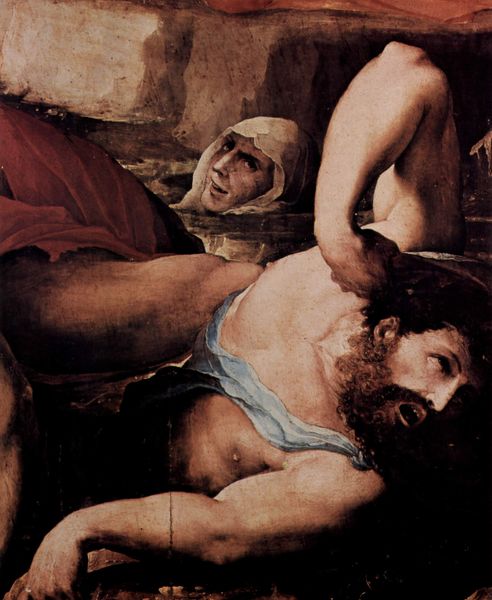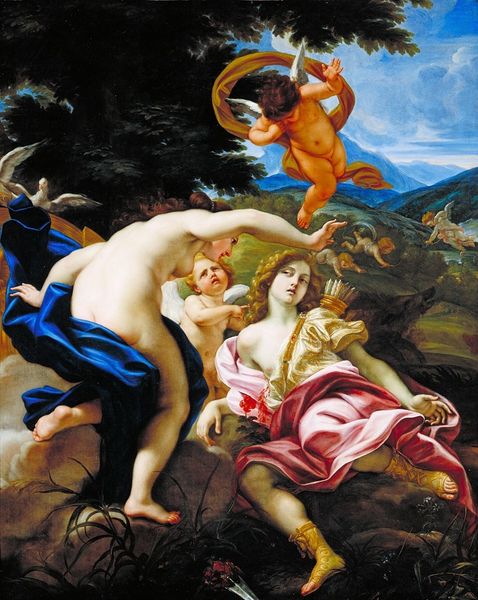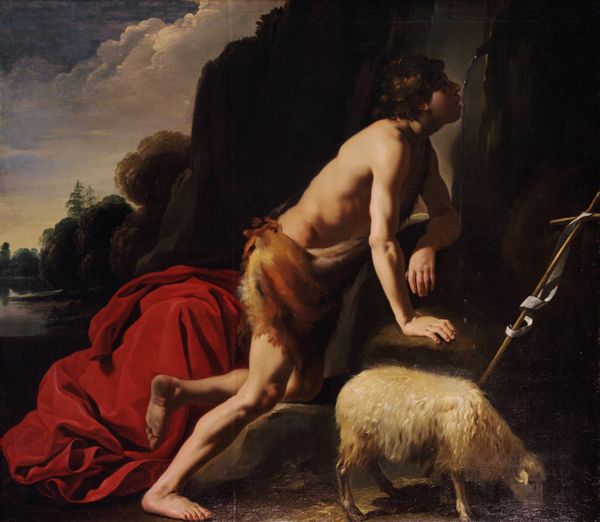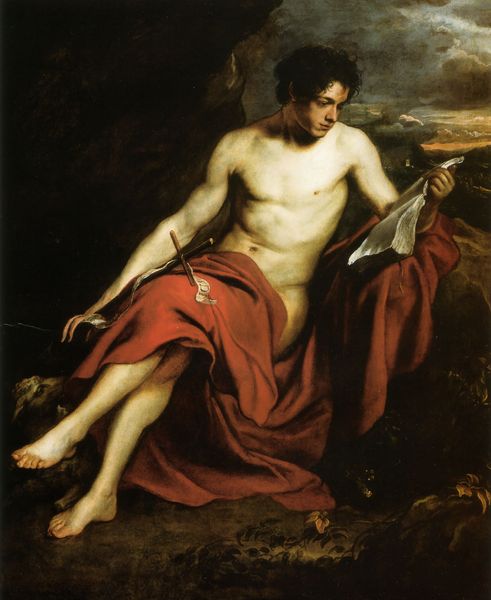
painting, oil-paint
#
portrait
#
neoclacissism
#
fantasy art
#
painting
#
oil-paint
#
figuration
#
roman-mythology
#
underpainting
#
mythology
#
history-painting
#
nude
#
male-nude
Dimensions: 189 x 144 cm
Copyright: Public domain
Curator: This is "Oedipus and the Sphinx," painted in 1808 by Jean-Auguste-Dominique Ingres. Editor: Wow. Talk about high stakes! I'm immediately struck by how intensely theatrical it feels, like a scene pulled right from a play. Oedipus seems so... contemplative. Almost like he's already figured it out. Curator: Indeed, the painting captures the pivotal moment when Oedipus confronts the Sphinx, poised to answer the riddle that will determine his fate and the fate of Thebes. Ingres really nails that tension. What I find especially interesting here is the way the bodies almost echo each other—their curves, the mirroring of arms. What could be a simple, illustrative rendering suddenly speaks to some deeper connection or resonance between the two figures. Editor: Absolutely, and speaking of bodies... that nude figure in the background, fleeing the scene. It’s just pure, distilled panic! Makes me wonder what horrors lie scattered behind Oedipus that we can't see? Curator: Right! And note how the clarity and precise linearity of the figures contrast so starkly with the hazy, almost dreamlike rendering of the distant landscape. Ingres uses that contrast, typical of Neoclassicism, to throw into even sharper relief the encounter at hand. Editor: True. Ingres totally gives us a masterclass in line and form, right? I do wonder, though, if the intensity of that precision might, in a way, flatten the emotion a bit? Oedipus almost appears too serene, considering the life-or-death situation. Curator: That's fair. And perhaps that serenity speaks to Ingres’ goal, or maybe Neoclassicism as a whole? Less about raw emotion and more about intellectual triumph. Oedipus isn’t reacting in the face of fear so much as demonstrating his capacity for reason. The triumph isn't in muscles bulging with action but his calm, certain pose. Editor: I like that—reason as a visual and visceral force. Overall, even with all the perfect lines, you feel a genuine pull. I won't lie, for me it's more the underlying horror and drama of the myth being referenced that does that for me. Curator: Exactly. I think for me what’s really compelling here is how Ingres takes an old story—a myth nearly three millennia old when he’s painting this—and makes it resonate anew with contemporary debates about reason and emotion, fate and choice. Editor: A visual argument—and a captivating one at that!
Comments
No comments
Be the first to comment and join the conversation on the ultimate creative platform.
